Your guide to vegetable patch success
Inspired to set up a veggie patch? Check out these tips from gardening expert Deryn Thorpe.
Getting started
Aim to establish your vegetable gardens in a position where they’ll get at least five hours of sunlight a day, though, in hotter parts of WA, some afternoon shade is fine.
In fact, you may want to add a retractable shade structure to give your plants some protection from the sun in summer. Dry winds can retard development and make your vegetables dry and bitter, so consider using shrubs or shade-cloth fences to screen windy garden sites.
Base the size of your vegetable patch on the space available and your enthusiasm. A ten-square-metre patch will feed a family of four, but you may need to spend a few hours a week keeping it in good condition.
One of the simplest ways to start a patch is to buy a raised corrugated iron planter, though you’ll need at least four if you’re serious about growing vegetables for your family.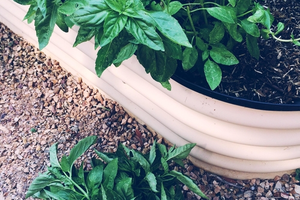 Fill the planters with vegetable soil mix from a soil retailer.
Fill the planters with vegetable soil mix from a soil retailer.
An alternative in our dry climate is a wicking bed: a garden made in containers with water reservoirs at the base. Moisture is drawn through the soil via a process called capillary action or wicking. This allows moisture to be evenly distributed through the soil, which creates better growing conditions.
Traditional gardens should be laid in a grid pattern with paths beside each bed. This will allow you to walk around the edge of a small patch and easily access garden beds in bigger plots.
Good soil is a must
Aim to improve clay soils and sandy soils with organic matter before you plant your vegetable crops. Add legume hay (lucerne or pea straw), well-rotted animal manures, Blood & Bone and lots of homemade or bought compost. 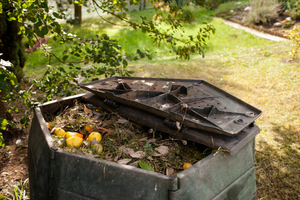
Organic matter provides nutrients for plants as it’s broken down by soil microorganisms and fungi and eventually forms part of the humus layer in the soil.
If you have heavy clay soil, consider raising the beds to aid drainage. Sandy soil can be improved with kaolin or bentonite clay to help it retain water and fertiliser.
Aim to add 3kg of clay per square metre and work it into the top 20cm of soil. This will lift the clay content to between 5% and 10%. Most unimproved topsoils in Perth only contain around 2% clay.
Get the water in
Install an irrigation system to ensure your plants don’t go thirsty, and 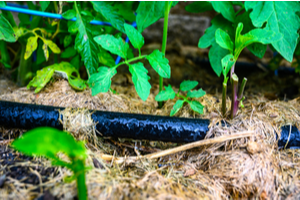 help the moisture stay where it’s needed with a layer of pea straw or lucerne hay mulch. This will protect plant roots from the sun, return organic matter to the soil and discourage weeds.
help the moisture stay where it’s needed with a layer of pea straw or lucerne hay mulch. This will protect plant roots from the sun, return organic matter to the soil and discourage weeds.
Round things off with a fertiliser containing the full range of trace elements, and feed seedlings weekly with seaweed tonic and liquid fertiliser.
Control insects
One of the benefits of growing your own food is keeping it free from insecticides.
Many insects can be picked off your plants or washed off with water from your garden hose.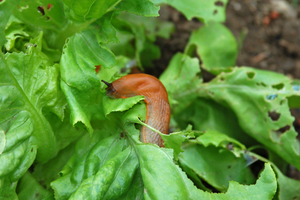
If you have significant problems with caterpillars, you can treat your plants with insecticides containing dipel or spinosad (naturally occurring soil bacteria).
Choose horticultural soap sprays for mites, aphids, thrips, mealy bugs and whitefly, and garlic and chilli sprays for aphids.
Rotate your crop
Some gardeners divide their vegetable patch into four or more areas so crops can be rotated. This helps to reduce pests, diseases and nutrient depletion in the soil.
Groups of similar vegetables are planted together in a different part of the garden each year. The most common method is a four-year system. No vegetable group is planted in the same place twice. 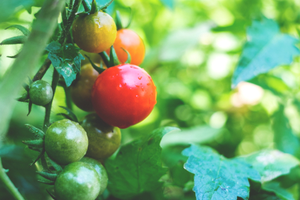
For example:
Crop one: Roots and onions – carrots, parsnips, beetroot, onions, garlic, leeks. (Plant in autumn.)
Crop two: Corn and cucurbits – sweet corn, pumpkins, squash, cucumber, and zucchini. After harvest, plant a green manure crop and dig it in before planting crop three. (Sow in spring.)
Crop three: Solanum family – tomatoes, capsicums, eggplants. (Plant in spring.)
Crop four: Legumes and brassicas – peas and beans, cabbages, broccoli, cauliflower. (Sow in autumn.)
You can plant leafy salad greens and Asian leaf vegetables at any time of the year in free spaces.
Want to know what to plant in Perth and when? Check out our Perth Planting Guide.
About Deryn Thorpe
Deryn’s an award-winning garden journalist passionate about creating beautiful and healthy home gardens.
She co-hosts the popular gardening podcast, All The Dirt, on which she shares her local experience and trade tips.